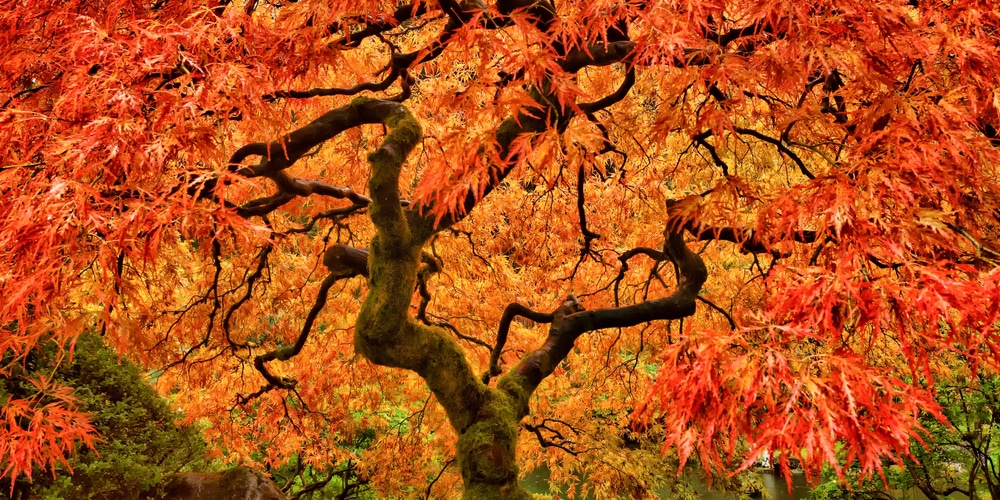The Japanese Maple Tree is a deciduous plant, either a small tree or a large shrub. Native to the islands of Japan, it now grows in hospitable climates around the world. It thrives in USDA hardiness zones five through eight in the United States.
Japanese Maples are susceptible to leaf scorch, particularly in places where the weather is warm. Below, read about leaf scorch, how to prevent it, and other tips for helping your beautiful tree or shrub thrive.
What Is Japanese Maple Leaf Scorch?
Japanese Maple leaf scorch is easily recognizable and is undoubtedly a sign that something is wrong with your plant. However, it is not a disease. Instead, leaf scorch is a sign that your tree or shrub’s environment is inhospitable in some way.
If you notice that the leaves on your plant have developed brown or yellowish blotches or spots, this is a sign of leaf scorch and is the most likely culprit.
What Causes Japanese Maple Leaf Scorch?
Japanese Maple leaf scorch has two primary causes. The first is too much exposure to intense sun rays. While Japanese Maple Trees need at least six hours of sunlight daily to thrive, if that sun is too strong, it can dry out and scorch the leaves.
The second cause is too little water and humidity, even if it’s cold outside. That said, the combination of high temperatures, low humidity, a lot of sunlight, and drought conditions can be deadly for many plants, including the Japanese Maple.
How To Prevent and Treat Japanese Maple Leaf Scorch
The easiest way to treat Japanese Maple leaf scorch is by looking at its causes and ruling them out by process of elimination.
Start by observing your Japanese Maple for a few days, especially when the weather is nice. Pay particular attention to how many hours the sun shines on your tree or shrub. That could be the issue if it’s in the sun for most of the day.
It’s challenging to provide shade for a tree. Consider moving it to a shadier spot if you have a dwarf or shrub. If your plant is too large to be moved, try watering more frequently and giving your tree some extra love with some of our tips below.
In addition, watch the soil. It should be well-drained because maples are also prone to root rot. At the same time, a Japanese Maple Tree needs a thorough soaking at least twice a week. If the soil around the tree is perpetually dry, add watering to your regular rotation of chores.
Remember that high winds can also dry out leaves. At the very least, dry wind can exacerbate problems caused by hot conditions. Try planting your Japanese Maple where it will have some shelter from the wind if that’s a problem in your area.
Care For Japanese Maple Trees
Over ten years or so, your maple may grow to ten to 15 feet in height and width. If you have a tree variety, it will be taller than it is wide. Make sure it has plenty of room to grow wherever you plant it.
Young Japanese Maples also need plenty of extra nutrition during their first few years. If you establish a healthy base, it will live and bloom for many years. Compost and mulch the ground and fertilize the soil several times through the growing season. In future years, continue to fertilize at least once a year.
With proper care, you can successfully avoid leaf scorch and help your gorgeous Japanese Maple thrive. It will produce beautiful reddish flowers season after season.

